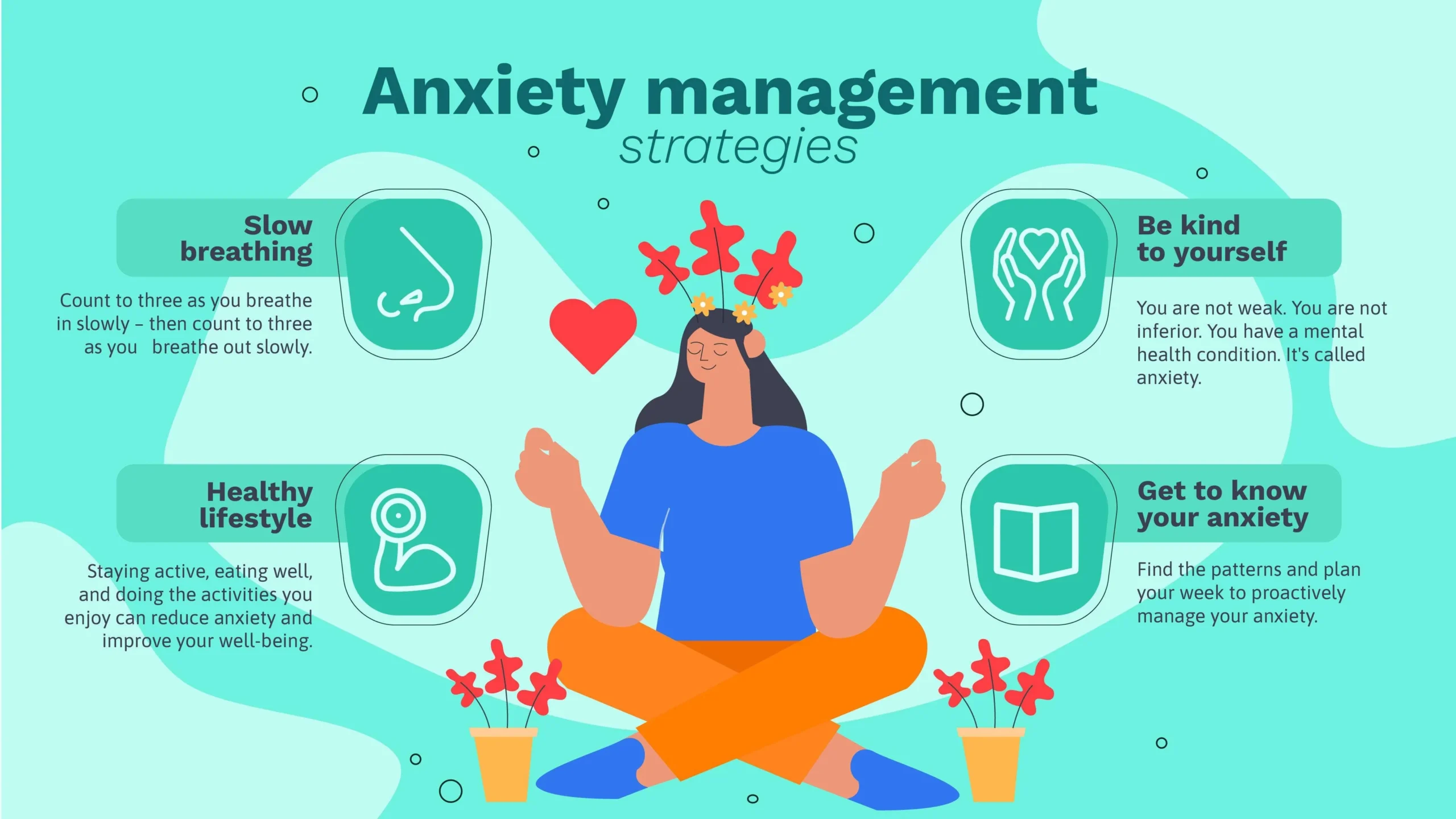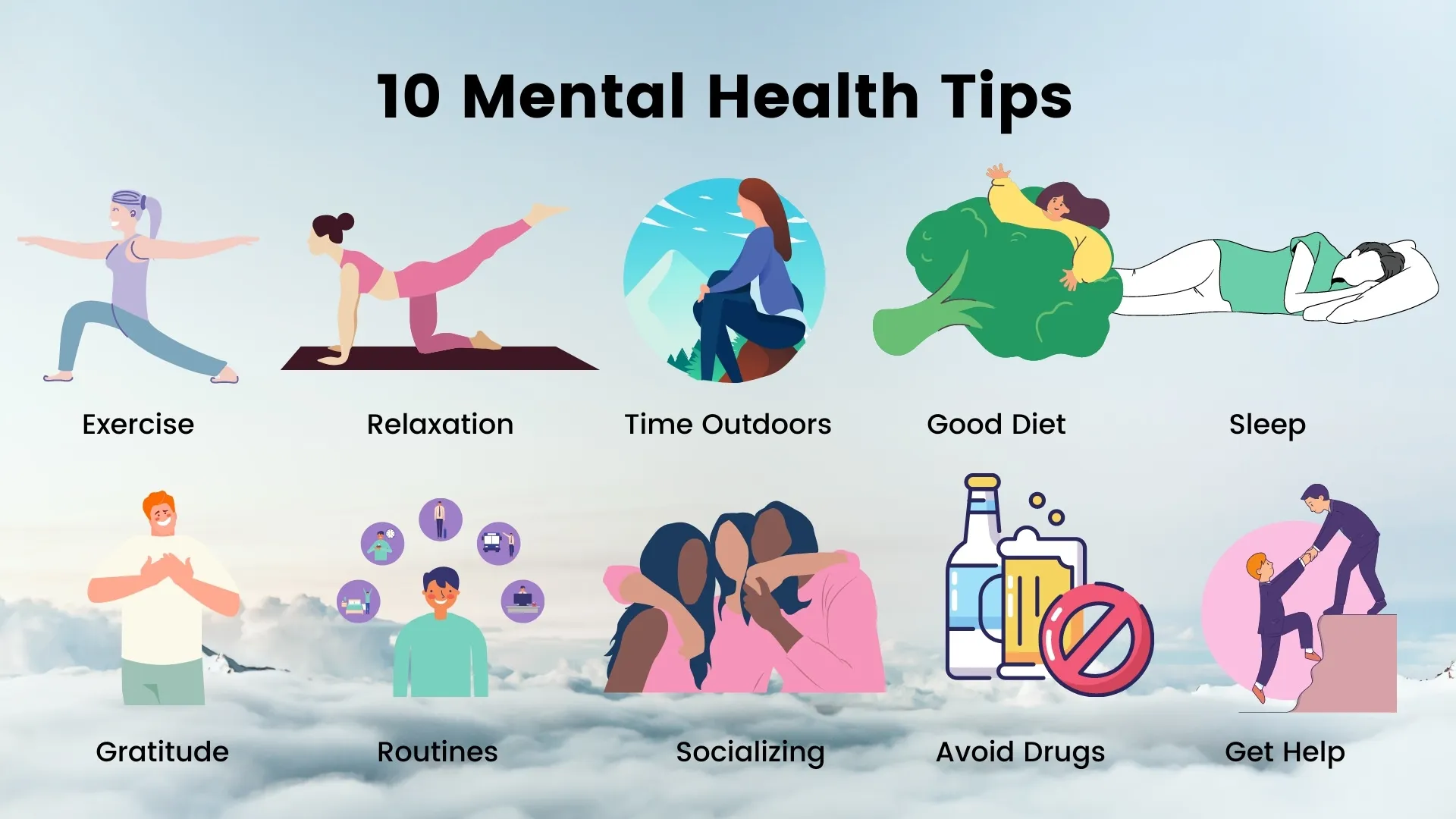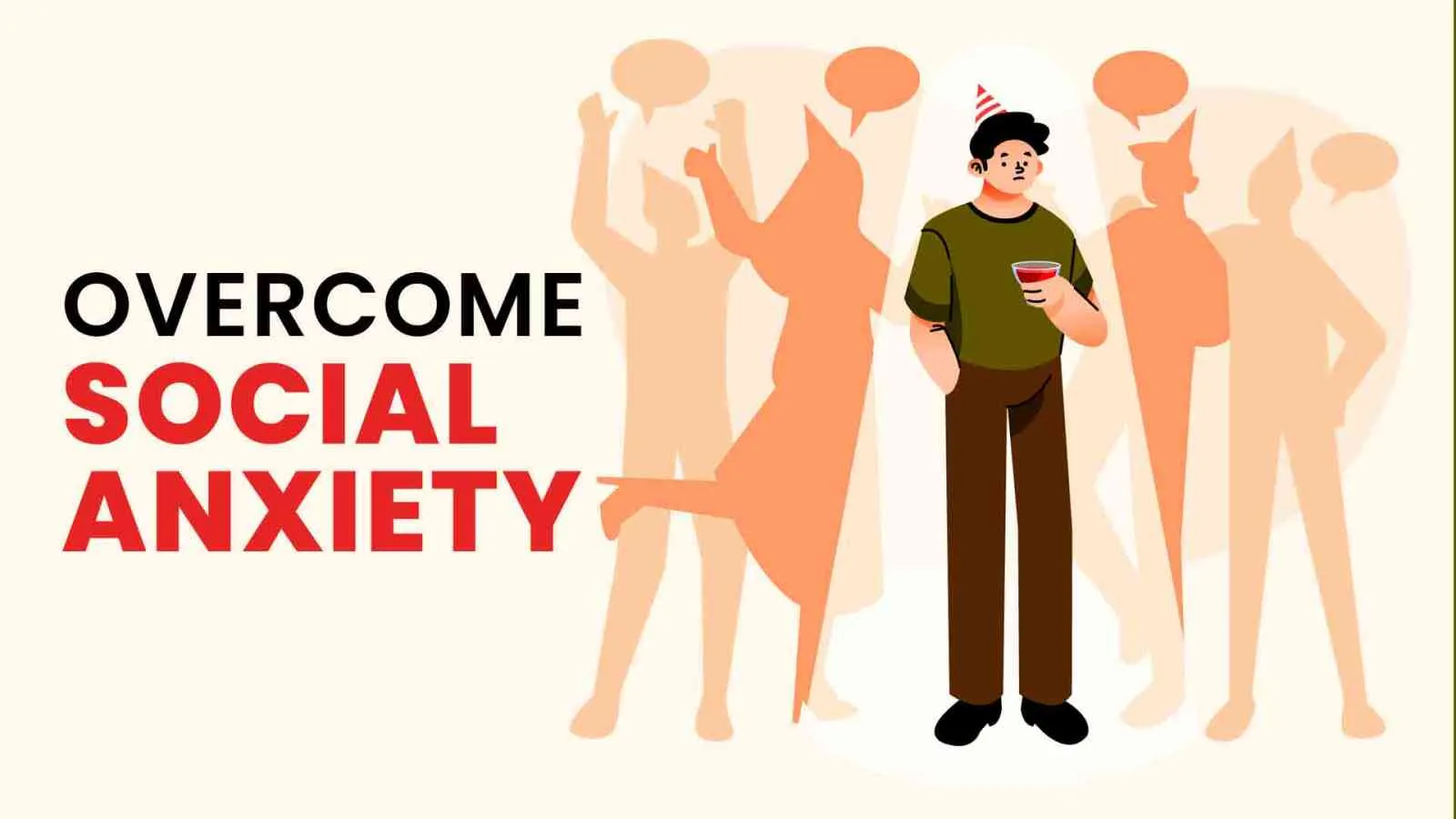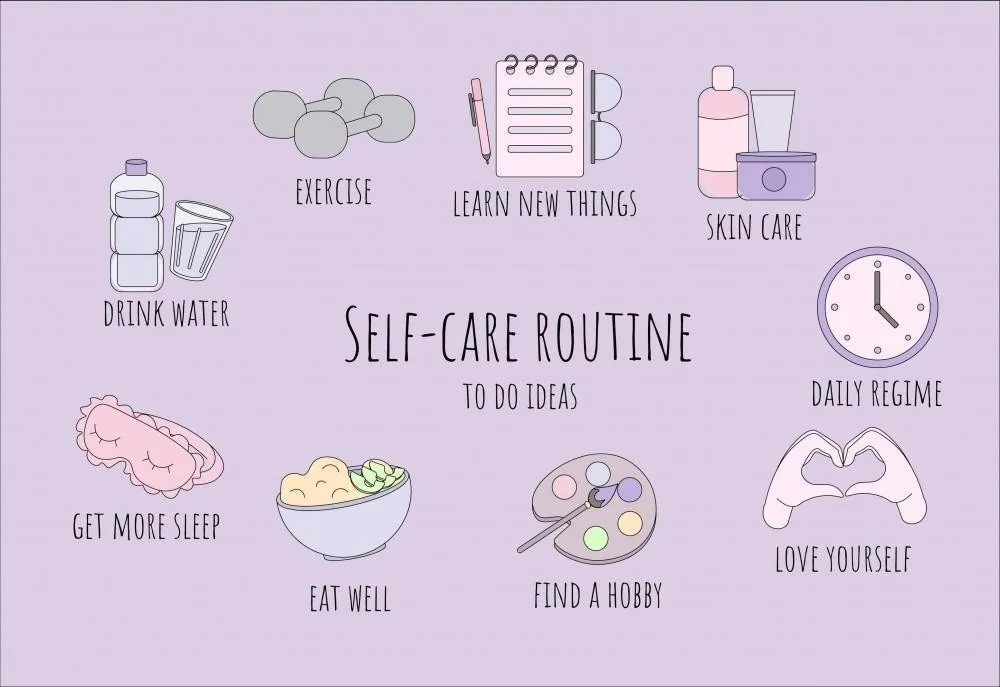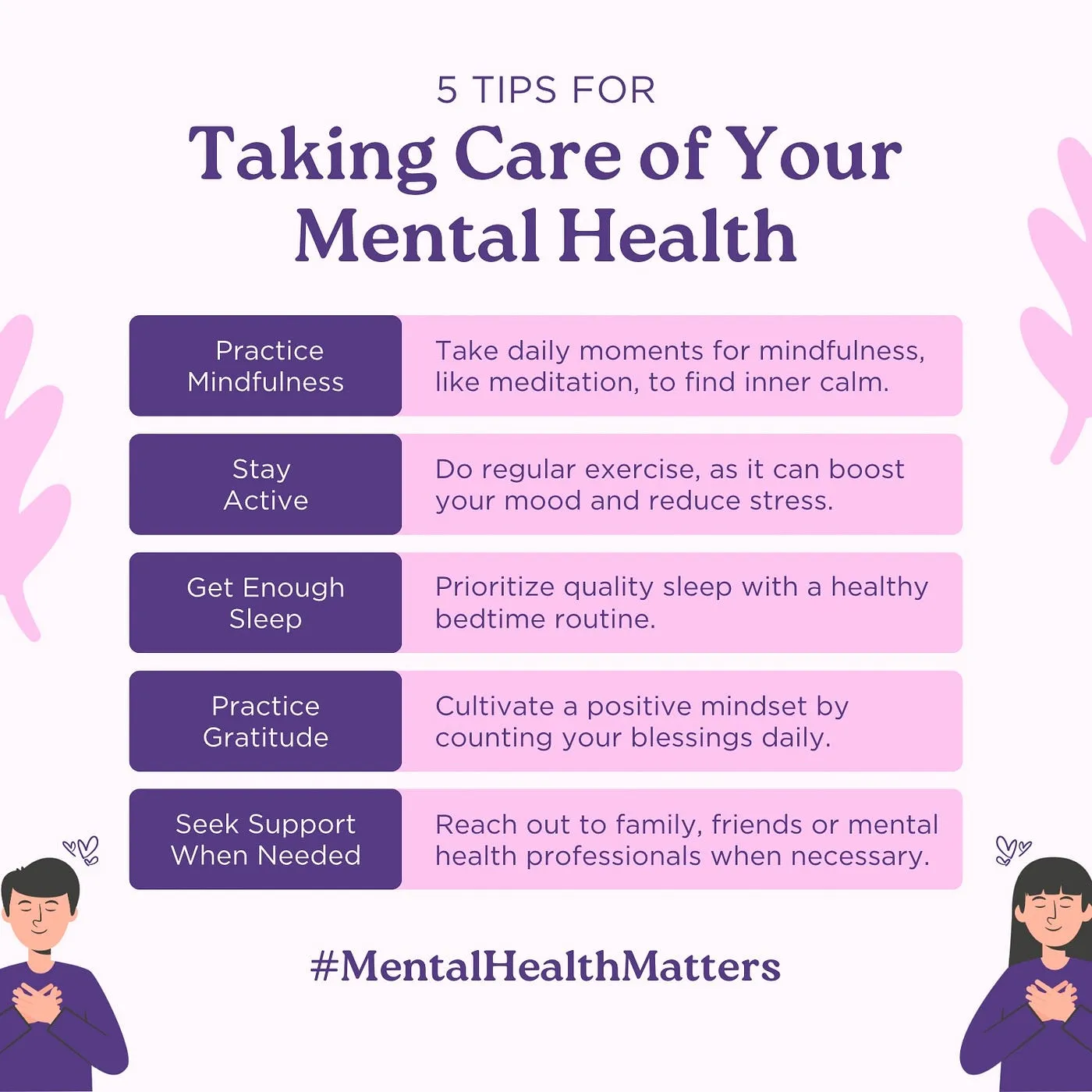Anxiety is a common experience that affects millions of people worldwide. Whether it’s occasional feelings of unease or chronic anxiety disorders, managing this condition is crucial for maintaining mental and emotional well-being. Fortunately, there are several effective techniques for managing anxiety that can help you regain control over your thoughts and emotions. In this article, we’ll explore practical and research-backed strategies that can help reduce anxiety and promote a sense of calm.
1. Mindfulness and Meditation: Grounding Yourself in the Present Moment
Mindfulness involves paying attention to the present moment without judgment. This practice helps to break the cycle of anxious thoughts by bringing your focus away from worries about the future or ruminations on the past. Meditation, which is often associated with mindfulness, is another excellent tool for calming the mind and reducing stress.
Benefits of Mindfulness and Meditation:
- Reduces Stress: Studies have shown that mindfulness meditation can lower cortisol levels, a hormone linked to stress.
- Improves Emotional Regulation: Regular mindfulness practice helps you become more aware of your emotions and better manage them.
- Enhances Focus: Mindfulness can improve your concentration and decrease the mental clutter that often fuels anxiety.
How to Practice Mindfulness:
- Start with Breathing: Focus on your breath, noticing the sensation of air moving in and out of your body. If your mind starts to wander, gently bring your focus back to your breath.
- Body Scan: Perform a body scan by mentally scanning your body from head to toe. Pay attention to any tension or discomfort, and allow yourself to relax into the sensation.
- Mindful Movement: Activities like yoga, walking, or even stretching can be done mindfully, helping you stay present and reduce anxious thoughts.
2. Deep Breathing Techniques: Calm Your Nervous System
One of the most immediate ways to manage anxiety is through deep breathing exercises. Deep breathing triggers the parasympathetic nervous system, which is responsible for the body’s “rest and digest” response, helping to calm the body and mind.
Breathing Techniques for Anxiety Relief:
- 4-7-8 Breathing: Inhale through your nose for 4 seconds, hold your breath for 7 seconds, and exhale slowly through your mouth for 8 seconds. This simple technique helps to slow your heart rate and promote relaxation.
- Box Breathing: Inhale for 4 counts, hold for 4 counts, exhale for 4 counts, and hold again for 4 counts. This technique can be done anywhere and is effective for calming nerves during moments of high anxiety.
- Abdominal Breathing: Place your hand on your stomach and take deep breaths into your abdomen rather than your chest. This helps activate the diaphragm, promoting deeper, more calming breaths.
Why Breathing Works:
- Reduces the Fight-or-Flight Response: Deep breathing activates the body’s relaxation response, helping to lower anxiety levels.
- Improves Oxygen Flow: Breathing deeply ensures that your body is getting enough oxygen, which can improve overall physical and mental health.
3. Progressive Muscle Relaxation: Releasing Physical Tension
Progressive muscle relaxation (PMR) involves tensing and then relaxing different muscle groups in the body. This technique helps to release physical tension, which often accompanies anxiety, and promotes overall relaxation.
Steps to Practice PMR:
- Find a Quiet Space: Sit or lie down in a comfortable position.
- Tense and Relax: Starting with your feet, tense the muscles for 5-10 seconds, then slowly release and relax for 20-30 seconds. Work your way up the body, focusing on different areas, including the legs, abdomen, chest, arms, and face.
- Focus on the Sensations: As you relax each muscle group, pay attention to how the muscles feel when released. This can help you become more attuned to the physical sensations of relaxation.
Why PMR Helps:
- Reduces Muscle Tension: Anxiety can cause muscle tension, especially in the neck, shoulders, and jaw. PMR helps to release this tension, leading to a more relaxed state.
- Increases Mind-Body Awareness: PMR encourages mindfulness by making you more aware of your body’s sensations and relaxation cues.
4. Cognitive Behavioral Therapy (CBT): Challenging Negative Thought Patterns
Cognitive Behavioral Therapy (CBT) is a well-established therapeutic technique that helps individuals identify and challenge irrational or negative thoughts. Since anxiety is often fueled by distorted thinking, CBT helps to reframe those thoughts and develop healthier, more realistic perspectives.
How CBT Can Help with Anxiety:
- Identifying Cognitive Distortions: Anxiety often stems from negative thinking patterns like catastrophizing (expecting the worst) or overgeneralizing (believing that one negative event means more bad things will happen). CBT helps you identify these patterns and replace them with more balanced thoughts.
- Thought-Action Link: CBT focuses on the connection between thoughts, emotions, and behaviors. By challenging anxious thoughts, you can reduce the intensity of anxiety and prevent it from escalating.
- Building Coping Strategies: CBT helps individuals develop healthy coping mechanisms and problem-solving skills to manage anxiety-provoking situations.
How to Apply CBT Techniques:
- Cognitive Restructuring: When you notice negative or anxious thoughts, write them down. Then, examine the evidence for and against those thoughts. Replace them with more realistic or balanced thoughts.
- Exposure: Gradually expose yourself to anxiety-inducing situations in a controlled and safe way. This helps reduce avoidance behavior and builds confidence in coping with anxiety triggers.
5. Limit Caffeine and Alcohol: Reducing Stimulants
Both caffeine and alcohol can contribute to anxiety, especially when consumed in large quantities. Caffeine is a stimulant that can increase heart rate and exacerbate feelings of nervousness, while alcohol, though initially calming, can disrupt sleep and increase anxiety levels once its effects wear off.
How to Limit Caffeine and Alcohol:
- Opt for Herbal Teas: Instead of caffeinated drinks, try herbal teas like chamomile or peppermint, which have calming properties.
- Set Limits: If you drink coffee or tea, try limiting your intake to one or two cups per day, and avoid consuming caffeine in the afternoon or evening to prevent sleep disruption.
- Monitor Alcohol Consumption: Consider limiting alcohol intake, especially on weekdays or when you’re feeling stressed, as it can affect your mood and exacerbate anxiety symptoms.
6. Journaling: Express Your Thoughts and Feelings
Journaling can be a powerful tool for managing anxiety. Writing about your thoughts, feelings, and experiences can help you process emotions, identify anxiety triggers, and gain perspective on stressful situations.
Benefits of Journaling:
- Reduces Mental Clutter: Writing things down can clear your mind and help you organize your thoughts, making it easier to manage anxiety.
- Identifies Patterns: Regular journaling helps you identify recurring thoughts or situations that trigger anxiety, allowing you to address them more effectively.
- Promotes Emotional Release: Journaling provides an outlet for pent-up emotions, reducing the intensity of anxious feelings.
How to Journal Effectively:
- Write Freely: Let your thoughts flow without worrying about grammar or structure. Simply write what comes to mind.
- Gratitude Journaling: Write down three things you are grateful for each day. Focusing on positive aspects of life can shift your mindset away from anxiety.
7. Get Active: Exercise for Anxiety Relief
Exercise is one of the most effective ways to reduce anxiety. Physical activity increases the production of endorphins, the body’s natural mood boosters, and helps regulate the nervous system.
Exercise Options for Anxiety:
- Aerobic Exercise: Activities like running, cycling, or swimming help release endorphins and improve overall mental health.
- Yoga: Yoga combines physical movement, breathing, and mindfulness, making it a powerful tool for managing anxiety.
- Strength Training: Lifting weights or engaging in resistance exercises can boost self-confidence and promote relaxation.
Why Exercise Works:
- Improves Mood: Exercise stimulates the release of neurotransmitters like serotonin and dopamine, which improve mood and reduce stress.
- Enhances Sleep Quality: Regular physical activity helps improve sleep, which is often disrupted by anxiety.
Conclusion
Anxiety is a challenging condition, but with the right tools and techniques, it can be managed effectively. By incorporating mindfulness, deep breathing, progressive muscle relaxation, CBT, exercise, and other strategies into your daily routine, you can reduce anxiety and improve your overall well-being. Remember, finding what works for you may take time, and it’s okay to seek professional support if needed. With persistence and the right mindset, you can take control of your anxiety and lead a calm, fulfilling life.
